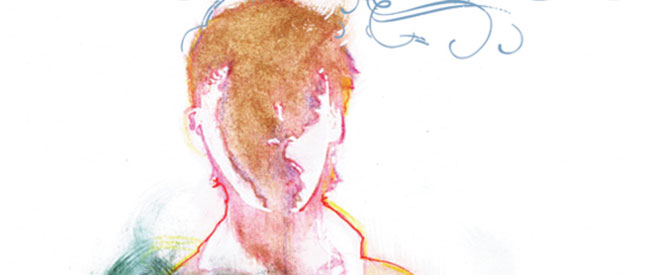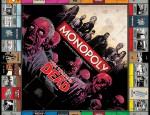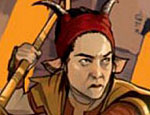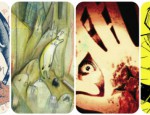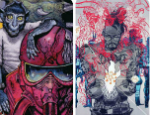Ethereal, haunting, and ultimately disturbing, Ray Fawkes’ latest comic book experiment will challenge your perceptions about the medium and what it means to be flesh and blood.
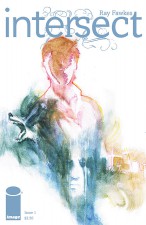 First things first: not everybody is going to get Intersect – and that’s not as bad as it sounds.
First things first: not everybody is going to get Intersect – and that’s not as bad as it sounds.
To say that critically acclaimed creator Ray Fawkes’ latest work from Image Comics is experimental would be a grave understatement. From the art’s multimedia application to its fragmented, stream-of-consciousness narrative technique, Intersect challenges the reader’s perception of what a comic book should be, on a number of different levels.
Heck, I’ll be totally honest. I’m not sure I totally understand it and I’ve read it multiple times. But, somehow, that seems to be the point. Fawkes doesn’t want this experience to be easy or forgiving.

Variant cover by Jeff Lemire
The key to achieving some level of fluency in this book’s narrative logic is to remember that everything is fluid in Intersect.
Even the title of the series underlines this fact: time, space, and people merge and coalesce into a convoluted whole, only to disperse and reform into something new a few pages later. There are no parallel lines in the world of Intersect, only an ongoing and terrible process of convergence.
There is a very loose narrative structure at play here, as we follow the narrator Jason (who happens to share his body with his partner, Alison) and his companion the Kid on their harrowing journey through the nightmarish composite city of Triedot. Pursued by a mysterious, presumably monstrous creature called Lucky, the duo (or is that a trio?) seem trapped in a hostile, ever-changing environment.
As Jason/Alison and the Kid travel through Triedot, the narrative becomes increasingly poetic in its rhythm and cadence, further 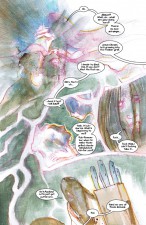 underscoring the ephemeral nature of the story, which is reinforced by Fawkes’ haunting artwork. In fact, if anything can be said to be constant in Intersect, it’s Fawkes’ ethereal, fully painted visuals.
underscoring the ephemeral nature of the story, which is reinforced by Fawkes’ haunting artwork. In fact, if anything can be said to be constant in Intersect, it’s Fawkes’ ethereal, fully painted visuals.
Anchoring the disjointed narrative to a unique visual tone that showcases a variety of media and techniques reinforces the fluid nature of the book, while somehow providing a solid, only somewhat shifting foundation to which the reader can cling during this horrifyingly beautiful journey into the depths of the human condition.
At first glance, Fawkes may seem to be experimenting with the form simply for the sake of experimentation, but there’s a lot more going on beneath the surface. Even as the world around us – the so-called real world – becomes more superficial and transient, Fawkes challenges us to peer beneath the skin of our perceptions, to pick at the scab protecting our fragile identities and to examine whatever truths we may or may not find there.
The real secret to understanding Intersect isn’t to follow Fawkes down his sensual, visceral rabbit hole, but to trace and maybe even celebrate our own self-perpetuating process of metamorphosis.
After all, like Intersect, the only thing constant about life is change.
Ray Fawkes (W, A) • Image Comics, $3.50, November 19, 2014.





